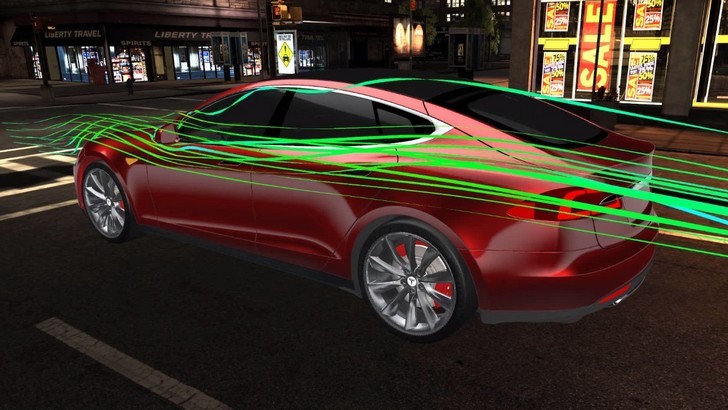We just can't get enough of the amazing features Tesla Model S was gifted with and we know you feel the same. This time, we stumbled upon a video showing how the sleek EV got its aerdoynamic body, which by the way, has a drag coefficient of Cd 0.24.
A good mix is hard to find when it comes to combining aerodynamics and good looks, but top class carmakers are not willing to make a compromise out of that. Especially when it comes to electric vechicles such as the Model S, where a low disruption of the air flow around the vehicle is vital on so many levels, especially in enhancing its range.
As always, Tesla is too cool for school, so innovation is basically everywhere. Even when it comes to aerodinamyc testing, because nobody would want to have a car with the aerodynamic properties of a brick and call it efficient, right?
Leaving the traditional wind tunnel for the history books, Tesla engineers used virtual technology. In other words, they put the Model S in a digital wind tunnel, so that they could find the ideal solution faster, before moving on to the old school clay sculpting and wind tunnel testing.
Exa Corporation provided the PowerFLOW software that handles predictive analysis of complex flow. In English, it replicates how the airflow would go over the car's body in real-life conditions. This helped Tesla engineers fix the problem with the electric sedan's side mirrors, known to increase aerodynamic drag by 3 to 6 percent, as well as its wheels, which can generate an extra 20 percent of drag. You do the math on how much that is, coming from just the wheels and side mirrors.
"One of the objectives with the Model S was to minimize the airflow around the front wheels and to line up the airflow so it hits the front wheels head on. We needed to avoid air hitting at an angle, as often the side of the tire acts like a bucket that catches the air, producing significant drag," explained Rob Palin, lead aerodynamicist at Tesla Motors.
For a glimpse on the pieces of science and engineering that make the Tesla Model S what it is today, head to the videos below:
As always, Tesla is too cool for school, so innovation is basically everywhere. Even when it comes to aerodinamyc testing, because nobody would want to have a car with the aerodynamic properties of a brick and call it efficient, right?
Leaving the traditional wind tunnel for the history books, Tesla engineers used virtual technology. In other words, they put the Model S in a digital wind tunnel, so that they could find the ideal solution faster, before moving on to the old school clay sculpting and wind tunnel testing.
Exa Corporation provided the PowerFLOW software that handles predictive analysis of complex flow. In English, it replicates how the airflow would go over the car's body in real-life conditions. This helped Tesla engineers fix the problem with the electric sedan's side mirrors, known to increase aerodynamic drag by 3 to 6 percent, as well as its wheels, which can generate an extra 20 percent of drag. You do the math on how much that is, coming from just the wheels and side mirrors.
"One of the objectives with the Model S was to minimize the airflow around the front wheels and to line up the airflow so it hits the front wheels head on. We needed to avoid air hitting at an angle, as often the side of the tire acts like a bucket that catches the air, producing significant drag," explained Rob Palin, lead aerodynamicist at Tesla Motors.
For a glimpse on the pieces of science and engineering that make the Tesla Model S what it is today, head to the videos below:


